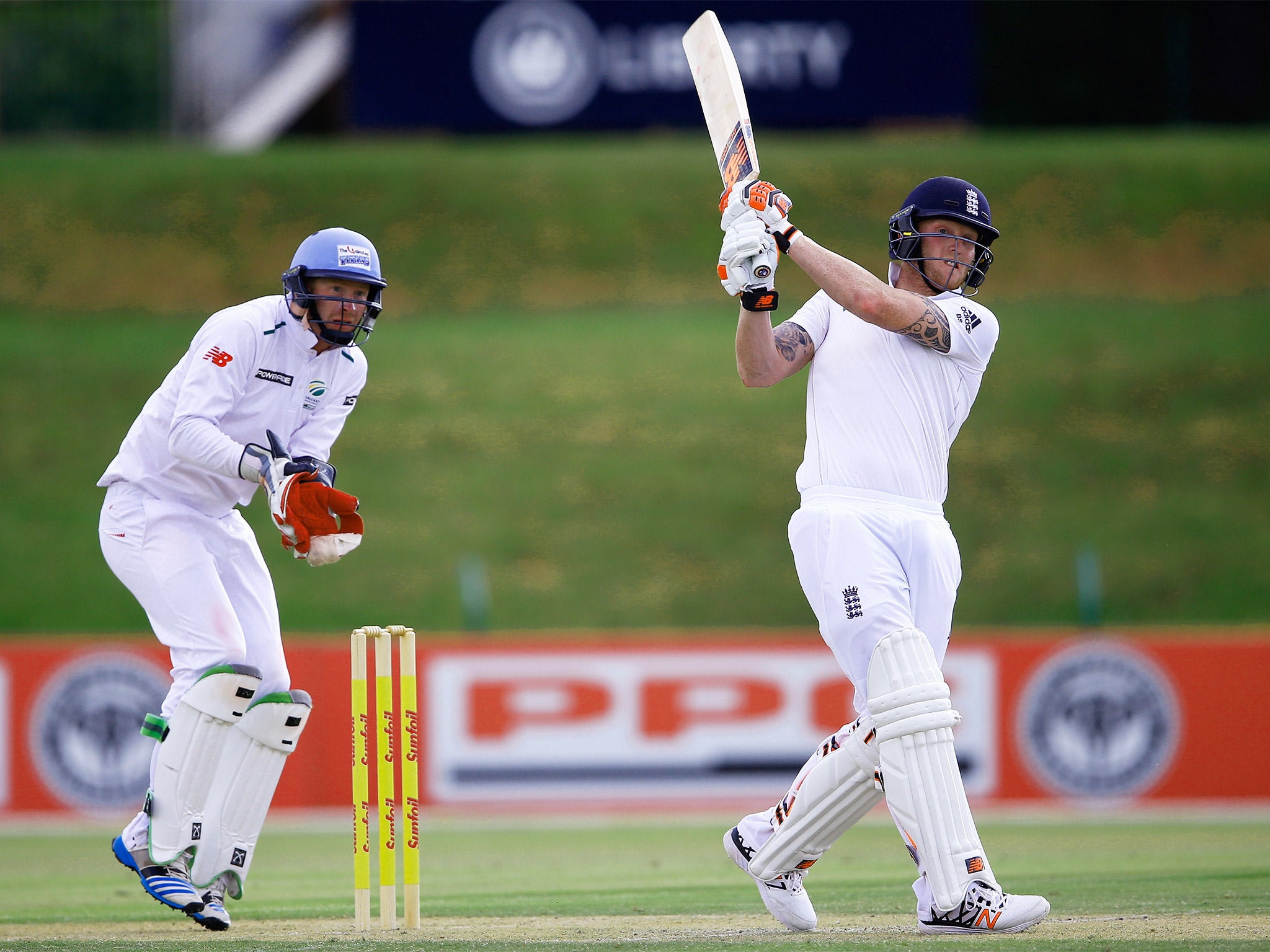England vs South Africa: Ben Stokes and James Taylor set the pace as tour gets underway
Taylor scored a typically punchy 114 and Stokes a perpetually scintillating 158 against a South Africa Invitation XI

Your support helps us to tell the story
From reproductive rights to climate change to Big Tech, The Independent is on the ground when the story is developing. Whether it's investigating the financials of Elon Musk's pro-Trump PAC or producing our latest documentary, 'The A Word', which shines a light on the American women fighting for reproductive rights, we know how important it is to parse out the facts from the messaging.
At such a critical moment in US history, we need reporters on the ground. Your donation allows us to keep sending journalists to speak to both sides of the story.
The Independent is trusted by Americans across the entire political spectrum. And unlike many other quality news outlets, we choose not to lock Americans out of our reporting and analysis with paywalls. We believe quality journalism should be available to everyone, paid for by those who can afford it.
Your support makes all the difference.England began their tour of South Africa today. It was low-key, sometimes hugely entertaining and probably no guide at all to how the Test series might evolve.
Perhaps the first day of the match against a South Africa Invitation XI (the sort of random team which can be all things to all men) was a perfect example of the way of modern touring. The opponents were willing but weak and it was crucial that the visitors spent as much time in the middle as they could.
England obliged by making 470 for 5 from 88 overs, the modern way of scoring. James Taylor scored a typically punchy 114 and Ben Stokes a perpetually scintillating 158. Both retired and, although some scorecards may list them as being not out, the convention and the Laws mean that they must be ruled as having been dismissed.
No matter, they both played with conviction and if the bowling – nine different players had a bash – became increasingly ragged, dispirited and substandard, it was this pair that made it so in a partnership of 195. It is no disrespect to say that neither Dale Steyn nor Morne Morkel will be losing sleep over this.
But as Stokes said on the outfield at close of play: “It’s always nice to get runs in these warm-up games, it’s what they’re used for, but now it’s a case of not getting too far ahead of myself and trying to keep the form I have shown here up to the first Test.”
For Stokes, this was a heartening return. His last action for England was in the third Test against Pakistan in Sharjah last month when he suffered a collar bone injury having landed with a sickening, earth-shaking thud as he dived for a catch.
At the time it was feared that his presence on this trip was in jeopardy but Stokes has worked tirelessly to recover, strictly adhering to the rehabilitation guidelines he was given. It appears to have worked as he struck 23 fours and five sixes (four of those after reaching his hundred), the three fifties that comprised the innings coming in 59, 38 and 32 balls respectively.
Taylor was a little less aggressive but his determination not to waste the second life he has been offered by England was writ large. His on-side play, as ever, was a delight and the sole false shot came when he was on 55 and edged a drive past slip.
The most important innings, however, was perhaps played by Nick Compton, representing England for the first time since his rather tortured innings against New Zealand at Headingley in 2013, which effectively cost him an opportunity to play in the Ashes.
Compton made 58 in two and three-quarter hours. He came in at 6 for 1 in the third over, after Alastair Cook was lbw to Thandolwethu Mnyaka pushing half forward, and that was soon to be 10 for 2 when Alex Hales was bowled shouldering arms to Junior Dala and saw the ball coming back. Both the opening bowlers gave a good account of themselves and England had to knuckle down for a while.
Compton did precisely that, imposing a method learned over many years of opening the batting (probably still his most effective position despite England’s plans to have him at three in the Test series). He blocked most of the time, which was what was required, and if he flirted with the occasional faulty cut shot he usually followed it with another model forward defensive.
As Stokes said: “As with every pitch, it’s the first 20, 30 balls you have to get through and then it becomes a little bit easier. That is all we have discussed really, and if you get through those, try and go big. We have looked at some figures comparing the new ball to a slightly older one. We know as a batting unit as well that the first hour is going to be the hard part to get through.”
Compton did not quite capitalise as he might have wished, becoming Mnyaka’s second lbw victim when he was stuck on the crease on 58. But he demonstrated some old-fashioned virtues in playing 95 dot balls from the 120 he faced and they should not be lightly regarded.
Join our commenting forum
Join thought-provoking conversations, follow other Independent readers and see their replies
Comments